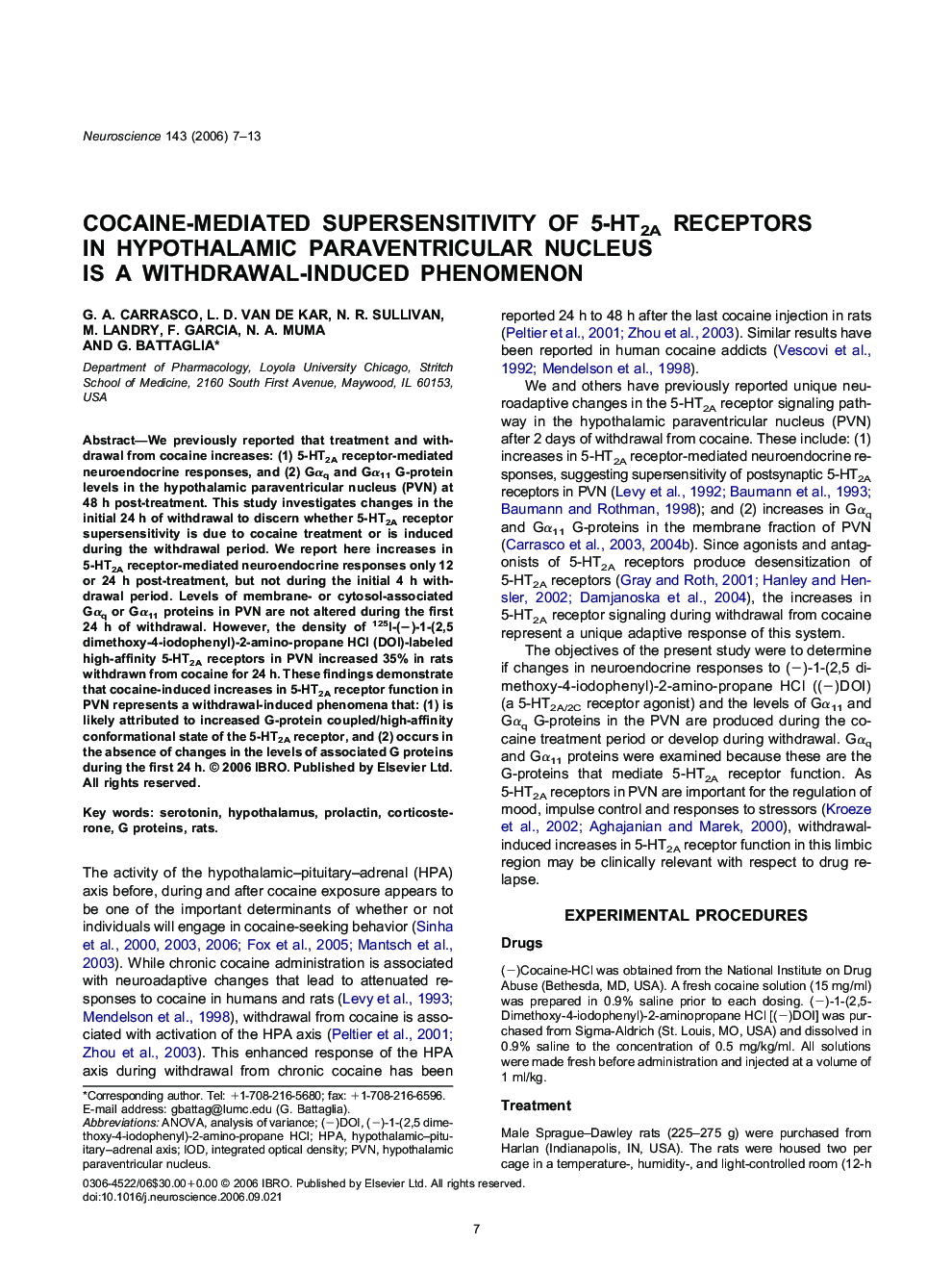| Article ID | Journal | Published Year | Pages | File Type |
|---|---|---|---|---|
| 4341408 | Neuroscience | 2006 | 7 Pages |
Abstract
We previously reported that treatment and withdrawal from cocaine increases: (1) 5-HT2A receptor-mediated neuroendocrine responses, and (2) Gαq and Gα11 G-protein levels in the hypothalamic paraventricular nucleus (PVN) at 48 h post-treatment. This study investigates changes in the initial 24 h of withdrawal to discern whether 5-HT2A receptor supersensitivity is due to cocaine treatment or is induced during the withdrawal period. We report here increases in 5-HT2A receptor-mediated neuroendocrine responses only 12 or 24 h post-treatment, but not during the initial 4 h withdrawal period. Levels of membrane- or cytosol-associated Gαq or Gα11 proteins in PVN are not altered during the first 24 h of withdrawal. However, the density of 125I-(â)-1-(2,5 dimethoxy-4-iodophenyl)-2-amino-propane HCl (DOI)-labeled high-affinity 5-HT2A receptors in PVN increased 35% in rats withdrawn from cocaine for 24 h. These findings demonstrate that cocaine-induced increases in 5-HT2A receptor function in PVN represents a withdrawal-induced phenomena that: (1) is likely attributed to increased G-protein coupled/high-affinity conformational state of the 5-HT2A receptor, and (2) occurs in the absence of changes in the levels of associated G proteins during the first 24 h.
Keywords
Related Topics
Life Sciences
Neuroscience
Neuroscience (General)
Authors
G.A. Carrasco, L.D. Van de Kar, N.R. Sullivan, M. Landry, F. Garcia, N.A. Muma, G. Battaglia,
